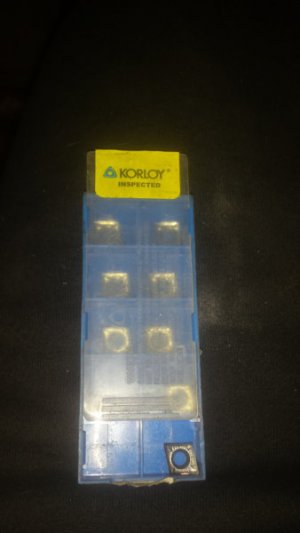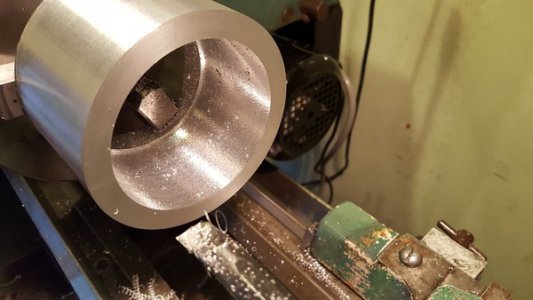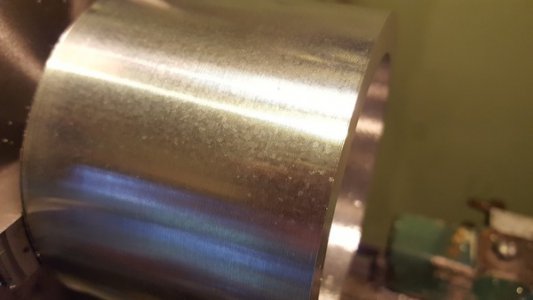- Joined
- Oct 30, 2016
- Messages
- 155
Cheers guys. This will take me a while to subsume the info....
Much appreciated.
Much appreciated.

Boris, I re-read my last post and I can see how it looks like Greek to someone who doesn't work with inserts. Let me try to clarify some of my comments.
A CCGT AK insert is a positive rake insert intended for aluminum. The nose radius (NR) on any insert is the most important feature because it influences your cutting conditions (speed, feed and depth of cut). A 32.51 insert has a nose radius of 1/16"/0.016". A 32./52 insert has a nose radius of 1/32"/0.031". The larger the nose radius the better the finish but the deeper the required cut will be to prevent chatter. It gets a little complicated because the larger the nose radius, the larger the tangential and radial cutting forces are. What this means is that in order to cut well with the least amount of deflection, you have to take a deep enough cut. For roughing, this cut should be at least NR + 0.010" but can go much deeper. For finishing, the depth of cut would be about 1/3 - 1/2 NR at minimum. Speeds vary with diameter but I would think its safe to say you can run your lathe at max speed and still be below optimum for these inserts so I would suggest trying it at the max speed your lathe can run for external turning. Feeds vary with the insert also; what I suggest is to try it at the lowest feed rate you have and slowly increase it until it affects the finish and then back off.
The guidelines above also apply to boring but you should adjust your feed rate to produce coils, not flakes or chips. Feed manually if you need to (it will be faster than you think). There is a LOT to boring with inserts, much more than can be discussed here, but try messing with your cutting conditions and see how it turns out.
Greek.... LOL I not only don't know about carbide inserts but I have no background in machining at all.
Anyway, on account of your post I read some stuff on the depth of cut and radius relationship on the Sandvik site this morning in the train to work. There are lots of things to remember but I guess I'll make myself a check list so I can slowly build library in my experience.
My lathe top speed is 1680rpm
^^ what he said ^^
I like the continuous shank boring bars because you can minimize stick-out to the depth of bore & not much more. Just be careful of toolpost interference & small gaps seem to attract swarf getting up in there. I noticed my cheapo thicker/continuous section shank (16mm) boring tool cuts a bit better & defers noise than my thinner shank (13mm) tool which necks down from the clamp part to the tip. Its intended for smaller minimum bore entry but I'm just saying there is less material to resist bending & torsion. The bigger tool is an AliExpress special, I suspect something made of 4140 type steel mixed with tuna cans judging by how it cut with a saw when I modified a similar one fo boring head.
Some other things to ponder
- those same uncoated inserts come in a host of variable nose radius. Larger radius makes for better finish (but require a bit more oomph 7sometimes don't like minimal skim cuts)
- if you are hearing harmonics, experiment with the rpm and/or feed. maybe I missed, but how much in-feed? Boring tends to favor less & ringing can start to happen on thinner remaining shell. Ive heard some people apply things to dampen but Ive never been brave enough to have a wad of putty fly off in my face
- boring bar work inevitably involves deflection, so lock the cross feed when turning and do a spring pass (or more) ideally at different fed rate settings so the cutter doesn't feed into its prior track so to speak, rather you want it to cut across the previous hill tops
- so many cutting fluids to choose from, but just make sure your edge does not hav ealuminum welded on the tip or even chipped tip. Harder to spot on the uncoated ones, I need my magnifying glass
- look for any debris under the insert, all it takes is a whisker & the geometry is off. I wash mine in a thimble of thinner before assembling.


